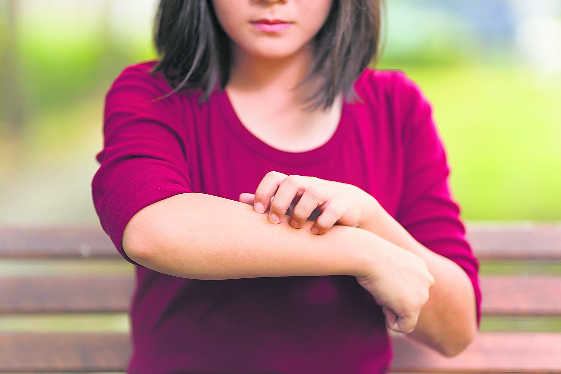Dr Vikas Sharma
Jock itch is a fungal infection, referred to as ringworm, involving the skin of the inner thighs, buttocks, and genitals. It is medically known as Tinea cruris. It occurs most frequently in people who sweat profusely. Symptoms include an itchy, red, sometimes ring-shaped rash.
This season is the time when due to high humidity in the air numerous fungal organisms become active. A fungus thrives in humidity — wet skin folds rubbing against each other get macerated easily, providing easy entry to fungi and yeast. As a result, one develops itchy, circular, reddish, flaky patches on the body, especially in skin folds at the groin (Jock Itch).
It can produce a very intense itch and is associated with a red or pink rash. Jock itch is primarily seen in the groin area, although it may spread to the adjacent areas. There can be a dry, scaly, well-demarcated rash or a collection of small, pinpoint red or pink bumps at each hair follicle. This form of eruption is often called ringworm because of its well-defined red edge with central clearing.
You are at risk if …
While jock itch is frequently noted in otherwise healthy people, certain groups of people may be more prone to jock itch. Patients with diabetes, obesity, and those with a compromised immune system, chronic illnesses and those on immune-system-modifying drugs are more prone to jock itch. Possible risk factors include irritation from tight or abrasive innerwear, excess moisture, sweating, skin rubbing or friction.
Jock itch usually begins with mild intermittent itching in the groin area. The itching can get worse and become unbearable in some cases. The rash is usually on both sides of the groin and affects the folds. Jock itch may be associated with athlete’s foot, also called tinea pedis. The same fungus that causes athlete’s foot in a person may actually spread to the groin in some cases. It is important to always check the feet for rashes in people with jock itch. Any foot infection must be treated in order to avoid recurrence of the jock itch.
The diagnosis of jock itch is usually based on the symptoms and appearance of the skin. A microscopic examination of skin scrapings covered in a drop of potassium hydroxide will confirm if there is a fungal cause of jock itch.
Keep in mind
- Keep the groin area clean & dry.
- Avoid groin skin irritation by wearing 100 per cent cotton innerwear.
- Avoid fabric softeners, bleaches, or harsh laundry detergents.
- Change into dry, clean clothes and inner-garments after a sweaty gym or workout session.
An early diagnosis via dermatologist and treatment with anti-fungal medication is of paramount importance. Residual skin discoloration in the area may persist for weeks to months after the treatment.
(Dr Sharma is a Chandigarh-based dermatologist)
Unlock Exclusive Insights with The Tribune Premium
Take your experience further with Premium access.
Thought-provoking Opinions, Expert Analysis, In-depth Insights and other Member Only Benefits
Already a Member? Sign In Now










